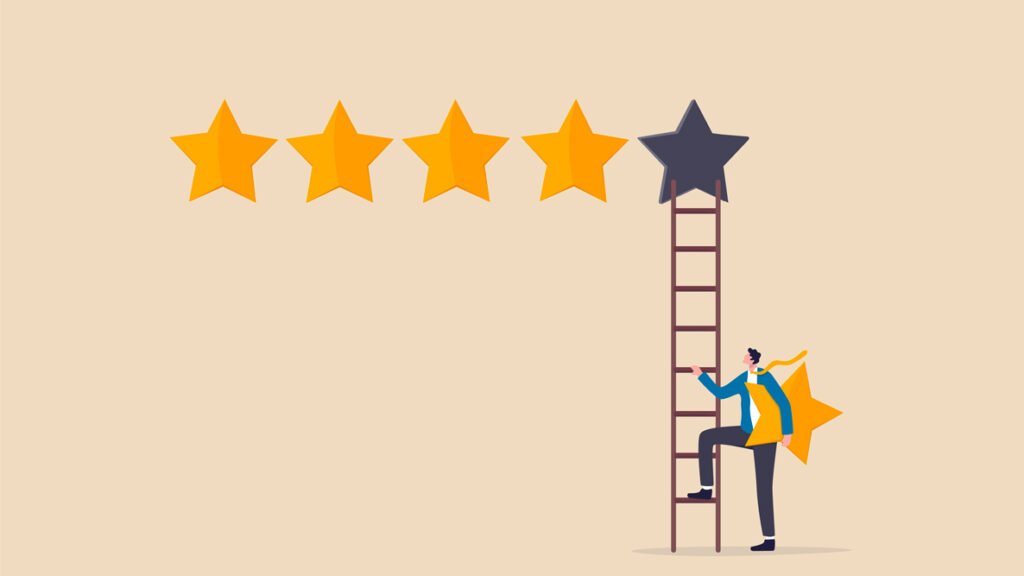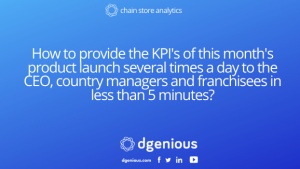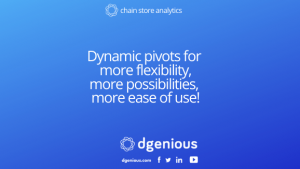
In retail, making customer loyalty a priority is an excellent strategy for your outlet network.
However, it is likely that you have been doing more to acquire new customers than to improve your customer retention.
In this article, we will explain why developing customer loyalty and achieving a good retention rate will become your main objectives, both for your online and in-store sales
Why make customer loyalty a priority for your retail business?
Building customer loyalty means maintaining a relationship that already exists. The consumer has taken the first step, he has been convinced once to make a purchase in your sales network because your values, your product, your sales promise, etc. have won him over. A first step has been taken, now you have to maintain this relationship.
A loyal customer represents an excellent opportunity for you because:
- he will come back to your stores,
- he will visit your online site
- he will increase their average basket as they make purchases
- he will develop your brand image through word of mouth.
Developing customer loyalty means going further by taking advantage of the initial acquisition efforts that are costly. A loyal customer allows you to develop your turnover significantly.
In an article from Lightspeed checkout system, we pinpointed a few figures that confirm this trend:
- a marketing strategy specifically developed for loyal customers has a 60-70% success rate.
- Managing a customer retention campaign costs 5 to 20 times less than a new customer acquisition campaign.
What retention rate do you need to achieve for customer loyalty to work?

First of all, what is the retention rate? The retention rate will allow you to calculate the number of people who came back to your stores over a given period. It is the opposite of churn, which tells you how many people you lost during that same period.
In an ideal world, the retention rate to reach would obviously be 100%.
A figure that is impossible to reach because churn is inevitable. That said, your objective will obviously be to measure and regulate it as much as possible in order to constantly improve thanks to your data analysis applied to all your points of sale.
As you will have understood, it is difficult to set a retention rate to be reached as it depends on different variables such as the business sectors. We also note that the B2C churn rate is for example higher than the churn of a B2B company.
Nevertheless, according to Frederick Reichheld of Bain & Company, a 5% increase in customer retention rate would increase sales performance by 25 to 95%.
These figures should convince you to pay more attention to your customer retention strategy. It represents a perfect opportunity to increase your revenues, while decreasing your expenses.
What to do for a successful customer loyalty?

As part of a customer loyalty strategy, your biggest mission is to get to know your customers as well as possible to offer them an optimal shopping and brand experience. Once registered as a loyal customer, you must not let up. It is necessary that you put in place a reward system to show them that their presence counts. It is imperative to maintain the trust they have given you up to now.
The best way to implement this loyalty is through personalisation.
To adapt your campaigns according to the behaviour and buying habits of your customers, it is necessary to rely on the most accurate data analysis possible, which will allow you to segment your loyal customers into homogeneous groups of buyers.
You have probably already sent a newsletter to one of your customer lists with, for example, an introductory promotion on a new pair of sneakers.
Unfortunately, many of them have just bought the pair and are frustrated by the offer.
As a customer, I have experienced this several times. For example, I felt this frustration when a big coffee brand sent me a flash sale promotion on the product I had already ordered the day before…
To avoid this embarrassing situation as a retail manager, you need to be able to automatically link each of your customers to their purchases in real-time. You will know their desires, needs, frustrations, frequency of purchases, their purchase history, …
Once you have determined these groups with similar behaviours, you will have the opportunity to:
- build your ideal buyer personas,
- adapt your promotional and marketing actions to the characteristics of these groups,
- offer your customers products/promotional actions that will appeal to them,
- identify the prospects who are most like your best customers.
- predict their next purchases.
- compare the consumption habits of your insider customers vis-à-vis non-insider customers.
Depending on the average basket for example, some loyal consumers space out their visits but have a larger average basket, others buy regularly but with a smaller average basket.
Another concrete example:
- You want to offer products on promotion that are directly related to the consumption habits of customers.
- To collect this data, analyse the different buying behaviours of your customers. Then, as explained above, classify them by group and sub-group (products purchased, frequency of visit, age,…)
- Based on the collected data, you will be able to see for example that within the same list 70% of the customers who bought bananas also put in their basket the Fairtrade dark chocolate with coconut.
- If most of this group buys this product, customers who haven’t yet put it in their cart are likely to be equally seduces the next time they visit the store.
Thanks to this data, all you need to do is:
- send a promotional newsletter to people who have not yet purchased this Fairtrade coconut chocolate,
- display the Fairtrade chocolate near the bananas in the store.
By initiating this action, you maximize the chances of formulating a promotion that will truly satisfy your customers and build loyalty to your store chain.
Be aware that for this data to be consistent and complete, it is important that you have complete data for the entire network of outlets. This is possible if you work with a retail business monitoring data platform such as dgenious, which will allow you to automatically link the data of the different contacts of each POS.
Customer loyalty is also achieved by sending personalized newsletters.

Indeed, one of the most suitable channels for personalizing actions according to their purchasing behaviour is the newsletter. It becomes a crucial asset in the development of your customer experience and the implementation of marketing actions.
A well-executed and personalized mailing campaign will result in the development of emotional loyalty, the type of loyalty recognized as being the most durable.
To achieve this, there is nothing like monitoring the results of each of your campaigns to enrich your data analysis. Calculate the impact of your Mailchimp e-mail campaigns on your in-store and online sales.
With dgenious, it’s possible and simple. You can easily connect our data business monitoring platform with Mailchimp.
For example:
- Create a list in dgenious of customers who bought an organic day cream without buying the eye cream of the same range. (If you want, this also works for the list of customers who have not yet bought this product and whose birthday is next month).
- Export this list directly into your Mailchimp to send out a custom newsletter, complete with a special offer on the eye cream 😎.
- Once the newsletter is sent, check out the specially designed dashboard and identify day by day how many and which customers went to the store to take advantage of the highlighted promotion (of course, you can adapt this dashboard easily to suit your preferences).
Did you like this article?
I suggest you download a complete use case that will give you inspiration for your next coupled sales analysis.
Its objective? Increase your sales by 10 to 15%* in 3 minutes.
* estimated figures based on a customer business case conducted in Q4 2021



